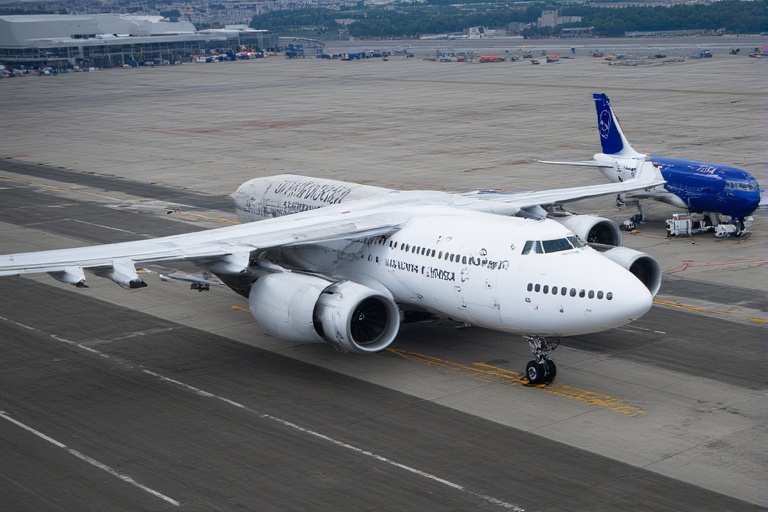
Lufthansa: A Comprehensive Guide to Germany's Flag Carrier
Introduction to Lufthansa
Lufthansa, the renowned German airline, stands as a pillar in the global aviation industry. Founded with roots tracing back to the early 20th century, Lufthansa has evolved into a major player, offering flights to hundreds of destinations worldwide. As the flag carrier of Germany, Lufthansa embodies efficiency, innovation, and a commitment to passenger comfort. Whether you’re a frequent flyer or planning your first international trip, understanding Lufthansa’s operations can enhance your travel experience. In this article, we’ll delve into Lufthansa’s rich history, its impressive fleet, expansive network, top-notch services, sustainability efforts, and the latest developments shaping its future. By exploring these aspects, you’ll see why Lufthansa remains a top choice for travelers seeking reliability and quality.
Lufthansa operates as part of the larger Lufthansa Group, which includes several subsidiaries that expand its reach across Europe and beyond. With a focus on modernization and customer satisfaction, Lufthansa continues to adapt to the ever-changing demands of air travel. As of 2025, Lufthansa is pushing forward with ambitious plans, including fleet upgrades and eco-friendly initiatives, making it a leader in sustainable aviation.
The History of Lufthansa
The story of Lufthansa begins in 1926 with the establishment of Deutsche Luft Hansa in Berlin, formed by merging two earlier aviation companies. This early version of Lufthansa served as Germany’s primary airline until World War II disrupted operations. During the war, Lufthansa shifted to maintenance and repair work, but post-war Allied occupation led to its dissolution in 1951.
In 1953, a new entity called Aktiengesellschaft für Luftverkehrsbedarf was founded in Cologne by former staff, and by 1954, it officially adopted the Lufthansa name and branding. Operations resumed in 1955 with domestic flights connecting key German cities like Hamburg, Frankfurt, and Munich. International expansion followed quickly, with routes to major European capitals and transatlantic services to New York by 1956. Political divisions meant Lufthansa couldn’t fly to Berlin until German reunification in 1990, solidifying Frankfurt as its main hub.
The 1960s and 1970s marked Lufthansa’s jet age, introducing aircraft like the Boeing 707 and 737, of which Lufthansa was the launch customer. Wide-body jets such as the Boeing 747 joined the fleet in the 1970s, enabling long-haul growth. The 1990s brought privatization in 1994 and the founding of Star Alliance in 1997, a global network that boosted Lufthansa’s connectivity. Acquisitions in the 2000s, including Swiss International Air Lines in 2005, Austrian Airlines in 2009, and Brussels Airlines, strengthened Lufthansa’s European presence.
Challenges arose in the 2010s with labor strikes and the tragic Germanwings Flight 9525 crash in 2015, a subsidiary incident that impacted the brand. The COVID-19 pandemic hit hard in 2020, forcing Lufthansa to cancel 95% of flights and secure a €9 billion government bailout. Recovery efforts included repaying the aid by 2021 and resuming growth. In 2023, Lufthansa acquired a 41% stake in ITA Airways, with options for full control, further expanding its influence. Today, Lufthansa honors its century-long legacy while innovating for the future, blending tradition with modern aviation demands.
Lufthansa’s Fleet and Modernization Efforts
Lufthansa boasts a diverse and modern fleet, comprising 274 aircraft as of recent data. The mainline fleet includes families like the Airbus A320 and A320neo for short-haul routes, Airbus A330, A340, A350, and A380 for long-haul, plus Boeing 747, 777, and 787 models. Historically, Lufthansa has flown iconic planes such as the Lockheed Super Constellation and Boeing 707, but its focus now is on efficiency.
Fleet modernization is a cornerstone of Lufthansa’s strategy. The Lufthansa Group has ordered over 250 new aircraft, valued at around €30 billion, with deliveries extending to 2030. These aircraft reduce fuel consumption by up to 30%, aiding environmental goals. In 2025, Lufthansa plans to receive a new aircraft every two weeks, accelerating its upgrade program. Notable additions include the Boeing 787-9 Dreamliner and Airbus A350-900, ordered in 2019.
Lufthansa’s Airbus A380s, grounded during the pandemic, were reactivated in 2022 for routes like Munich to Boston and New York. In 2025, upgrades include new Business Class seats on some Boeing 747s. This commitment to fleet renewal ensures Lufthansa maintains high safety standards and operational efficiency, with subsidiaries like Lufthansa Technik handling maintenance.
Destinations and Global Reach of Lufthansa
Lufthansa connects passengers to 229 destinations across the globe, from bustling metropolises to remote locales. Its primary hubs are Frankfurt and Munich, serving as gateways to Europe, North America, Asia, Africa, and beyond. Key routes include transatlantic flights to cities like New York, Chicago, and Los Angeles, and Asian connections to Tokyo, Shanghai, and Singapore.
Through the Star Alliance, Lufthansa offers seamless travel with partners like United Airlines and Air Canada, expanding options without direct flights. In Europe, Lufthansa dominates with frequent services to London, Paris, and Madrid. Emerging markets in Africa and the Middle East, such as Johannesburg and Dubai, are also well-covered.
Recent expansions include increased capacity for 2025, with a 4% hike amid strong demand. Lufthansa’s network adapts to trends, like boosting leisure routes post-pandemic. Whether for business or vacation, Lufthansa’s extensive reach makes it a versatile choice for international travelers.
In-Flight Services and Passenger Experience at Lufthansa
Lufthansa prioritizes passenger comfort with multi-class offerings. Economy class features ergonomic seats, complimentary meals on long-haul flights, and entertainment systems with hundreds of movies and games. Premium Economy adds extra legroom, enhanced dining, and priority boarding.
Business Class on Lufthansa provides lie-flat seats, gourmet cuisine, and lounge access, while First Class elevates the experience with private suites, caviar service, and chauffeur transfers at select airports. In 2025, Lufthansa is unifying services across subsidiaries for consistency, enhancing efficiency and customer satisfaction.
The Miles & More loyalty program rewards frequent flyers with points redeemable for upgrades and hotel stays, recently partnering with Marriott Bonvoy. Lufthansa’s app allows easy booking, check-in, and real-time updates, ensuring a smooth journey from start to finish.
Sustainability Initiatives by Lufthansa
Sustainability is at the heart of Lufthansa’s operations. The airline aims to halve net CO2 emissions by 2030 and achieve carbon neutrality by 2050. Key efforts include fleet modernization to cut emissions by 30% with efficient aircraft.
Lufthansa promotes Sustainable Aviation Fuel (SAF), partnering with entities like Shein, though some collaborations face greenwashing scrutiny. Green Fares offset emissions through certified projects, and operational tweaks like optimized flight paths reduce fuel use. Lufthansa also invests in waste reduction and electric ground vehicles, demonstrating a holistic approach to eco-friendly travel.
Recent Developments and News About Lufthansa
In 2025, Lufthansa reports strong Q2 profits amid global demand, reaffirming its outlook despite volatility. The airline is centralizing European subsidiaries starting 2026 for better efficiency. Labor issues persist, with pilots demanding better pensions, which Lufthansa deems unaffordable, threatening to relocate aircraft.
A new supervisory board chairman was appointed in September 2025. Lufthansa’s turnaround plan gains momentum, focusing on cost control and capacity growth. Despite competition from carriers like Turkish Airlines, named Europe’s best for the 10th year, Lufthansa holds strong in premium segments. Past incidents, like the 2024 antisemitism penalty, have led to internal reforms, including hiring an antisemitism manager.
Conclusion
Lufthansa exemplifies resilience and innovation in aviation. From its historical roots to cutting-edge fleet and sustainability focus, Lufthansa continues to set standards. As it navigates 2025 challenges like labor disputes and economic shifts, Lufthansa’s commitment to passengers and the planet positions it for long-term success. Whether flying for business or leisure, choosing Lufthansa means opting for a trusted partner in global travel. With ongoing modernization, Lufthansa is poised to remain a leader, inspiring confidence in every journey.
FAQs About Lufthansa
What is Lufthansa’s main hub?
Lufthansa’s primary hubs are Frankfurt Airport and Munich Airport, serving as central points for its extensive network.
How many destinations does Lufthansa fly to?
Lufthansa operates flights to 229 destinations worldwide, covering Europe, the Americas, Asia, Africa, and the Middle East.
What is Miles & More?
Miles & More is Lufthansa’s loyalty program, allowing members to earn and redeem miles for flights, upgrades, and partner rewards like hotel stays.
Is Lufthansa part of an airline alliance?
Yes, Lufthansa is a founding member of Star Alliance, the world’s largest airline alliance, offering benefits like shared lounges and seamless connections.
What sustainability measures has Lufthansa implemented?
Lufthansa focuses on fleet modernization, Sustainable Aviation Fuels, and carbon offset programs to reduce emissions and promote eco-friendly travel.
How can I book a flight with Lufthansa?
You can book directly through Lufthansa’s website, mobile app, or authorized travel agents for the best deals and options.
What classes of service does Lufthansa offer?
Lufthansa provides Economy, Premium Economy, Business, and First Class, each with tailored amenities for comfort.
Has Lufthansa recovered from the COVID-19 impact?
Yes, Lufthansa has rebounded strongly, repaying bailouts and increasing capacity in 2025 amid rising demand.
What recent partnerships has Lufthansa announced?
Recent collaborations include loyalty ties with Marriott Bonvoy and SAF deals, though some face environmental scrutiny.
How does Lufthansa ensure passenger safety?
Lufthansa adheres to strict international standards, with regular fleet maintenance by Lufthansa Technik and crew training programs.






